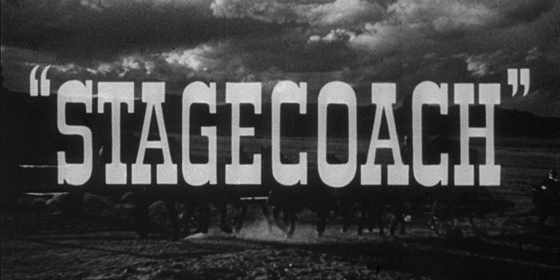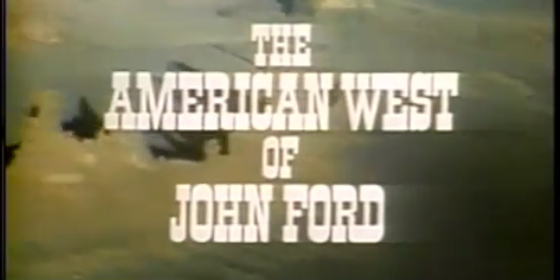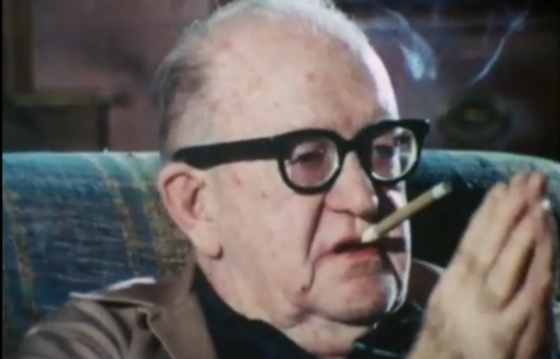The 30-day film watching experiment continues with John Ford’s classic 1939 western.
For newcomers, the deal is that I must watch a film every day and make notes about it, with the following rules:
- I’ve already seen it
- I must make notes whilst I’m watching it.
- Pauses are allowed but the viewing must all be one session.
- It can’t be a cinema release.
The point is to capture my instant thoughts about a movie and my overall film diet for 30 days, as well as post interesting links to the film in question.
Here are my notes on Stagecoach (1939) which I watched on a DVD on Tuesday 13th March.
- John Ford’s first sound western.
- Apparently Orson Welles watched this 40 times whilst making CITIZEN KANE (1941).
- Nominated for Best Picture in 1939.
- Motley crew of people get on a stagecoach and journey across Apache territory.
- Typical Ford use of real locations, especially Monument Valley.
- Costumes are fantastic.
- Acting a little (ahem) “of its time”.
- John Wayne looks so young – our popular image of him is as an older man.
- Banking commentary at 33 mins! (Occupy Wall Street by way of Monument Valley… )
- The pompous banker is played by Henry Gatewood and the screenplay has the foresight to include the detail that he’s just embezzled some some assets.
- Interesting camera positioning within a confined space – compare to THE SUGARLAND EXPRESS (1974) and CHILDREN OF MEN (2006).
- Ford must have planned out his shots carefully.
- According to Steven Spielberg, Ford never shot coverage, so the studio couldn’t edit in their preferred takes.
- At one point (47 mins) a character actually says the words: “well I’ll be dog gone”.
- Cast actually blend well together, newcomers to the film might be surprised it’s not an all Wayne affair.
- Claire Trevor, John Carradine and Thomas Mitchell all excellent.
- Claire Trevor’s character is a prostitute so notorious that local women have conspired to oust her from the town.
- Quite a bit of smoking goes on e.g. Curley lighting his cigarette from the lamp and the Doc smoking his cigar.
- Racial attitudes are more interesting than expected.
- Although the Apaches are hostile, there is one scene in the Mexican fort which suggests racial tolerance where they talk of the wife’s Apache people.
- The idea of an anti-hero prisoner on board may have influenced ASSAULT ON PRECINCT 13 (1976) and other films.
- Climactic chase is actually exciting!
- Replace the horses with helicopters and the chase is reminiscent of the helicopter attack on the village in APOCALYPSE NOW (1979)
- Did RAIDERS OF THE LOST ARK (1981) reference the Apache sliding under the coach in the scene where Indy slides beneath the truck?
- The climax of MAD MAX 2 (1981) was also possibly influenced by this chase.
- Blending of rear projection and location shooting is actually pretty good.
- Foley of water splashing in the Doc’s face is one of the more notable sound effects.
- The cavalry charge is signified by the bugle, an important sound effect that is blended in with the score.
- Interesting that the Wayne character is a prisoner – somewhat against type.
- Denouement sequence interesting as we see a criminal propose marriage to a prostitute. So much for 1930s morality!
- Misleading ‘switch’ in who got shot in the final scene reminiscent of the climax of MINORITY REPORT (2002).
- Closing dialogue (“Doc, I’ll buy you a drink”) is a bit like CASABLANCA (1942).
- Claire Trevor is billed above John Wayne in the end credits.
- Holds up very well as a classic Western.
- I definitely need to get the Criterion Blu-ray of this – it has a load of interesting extras.


